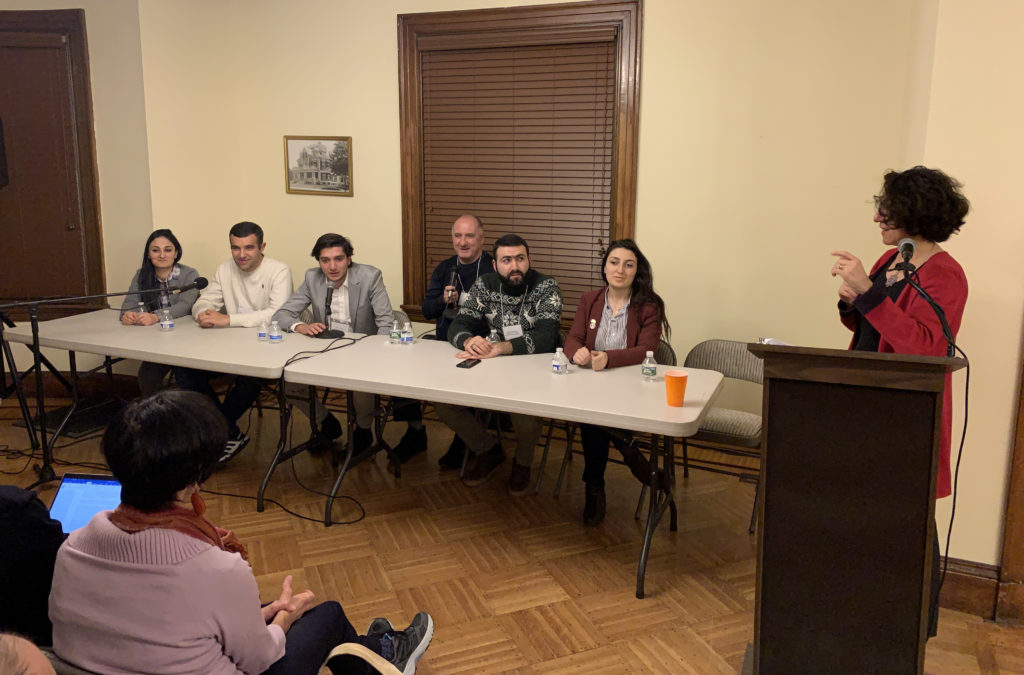WATERTOWN — The Cambridge-Yerevan Sister City Association (CYSCA) presented “Activism and Transition to Leadership in Armenia,” a lively panel discussion of the events of the Velvet Revolution in Armenia earlier in 2018, at the Armenian General Benevolent Union New England center in Watertown on the evening of December 6. The five speakers visiting from different parts of Armenia were all young activists in their early 20s. The event was cosponsored by the National Association for Armenian Studies and Research (NAASR) / Calouste Gulbenkian Foundation Lecture Series on Contemporary Armenian Issues.

The audience was first welcomed by Marc Mamigonian on behalf of NAASR and CYSCA Open World Program Director Alisa Stepanian on behalf of CYSCA. Dr. Anna Ohanyan, Richard B. Finnegan Distinguished Professor of Political Science and International Relations at Stonehill College, served as moderator. Interpreter Ara Hakobyan facilitated communications for the panelists, with the exception of Astghik Isakhanyan, who spoke in English.
Ohanyan began by asking the panelists where they were during the 10 days the movement was building and how it felt to be a part of that movement.
Isakhanyan is from Goris, in the southern Armenian province of Syunik, and worked as project coordinator for the Rights Information Center, a nongovernmental organization (NGO), which works to help people know and protect their rights. In October 2016, the despotic governor of Syunik was dismissed, she said, so the atmosphere was somewhat freer than before. Isakhanyan said, “In the first days, in my region, and in the southern parts of Armenia, people didn’t believe that it would succeed, especially older people.” However, some young people went to Yerevan to join the movement when Nikol Pashinyan returned there on his march.
Isakhanyan said these young people were considered very courageous because in Goris, many people work for the government, at that time controlled by the Republican Party, and the latter spread the word that those who joined the movement, or their parents and family, would lose their jobs. Only when it became obvious that the movement would succeed if everybody joined in did around 80 people go out in public. Even writing on social media in favor of the movement could be dangerous. Isakhanyan’s NGO was one of the first to spread the news on its webpages and social media. They declared that they would not work for one week but instead organize a rally to demand the Republicans and Serzh Sargsyan to resign.
Amazingly, it was school children aged 7 who started the first rally. Isakhanyan said, “They ran out of the school and we saw that the police came with them and they were walking… They really were 7 years old… I was in my office and I heard some noises. We looked out and saw that children with their bags, really small ones, are running and screaming ‘Merzhir Serzhin’ (Reject Serzh) and some announcements like this. Then people were encouraged. It was a really, really very emotional moment, because all the older ones were really afraid but they were really for that. The children did not understand the fear, what is fear, or what to fear. They saw on the internet that in other cities that people went out, so they also went out.”













